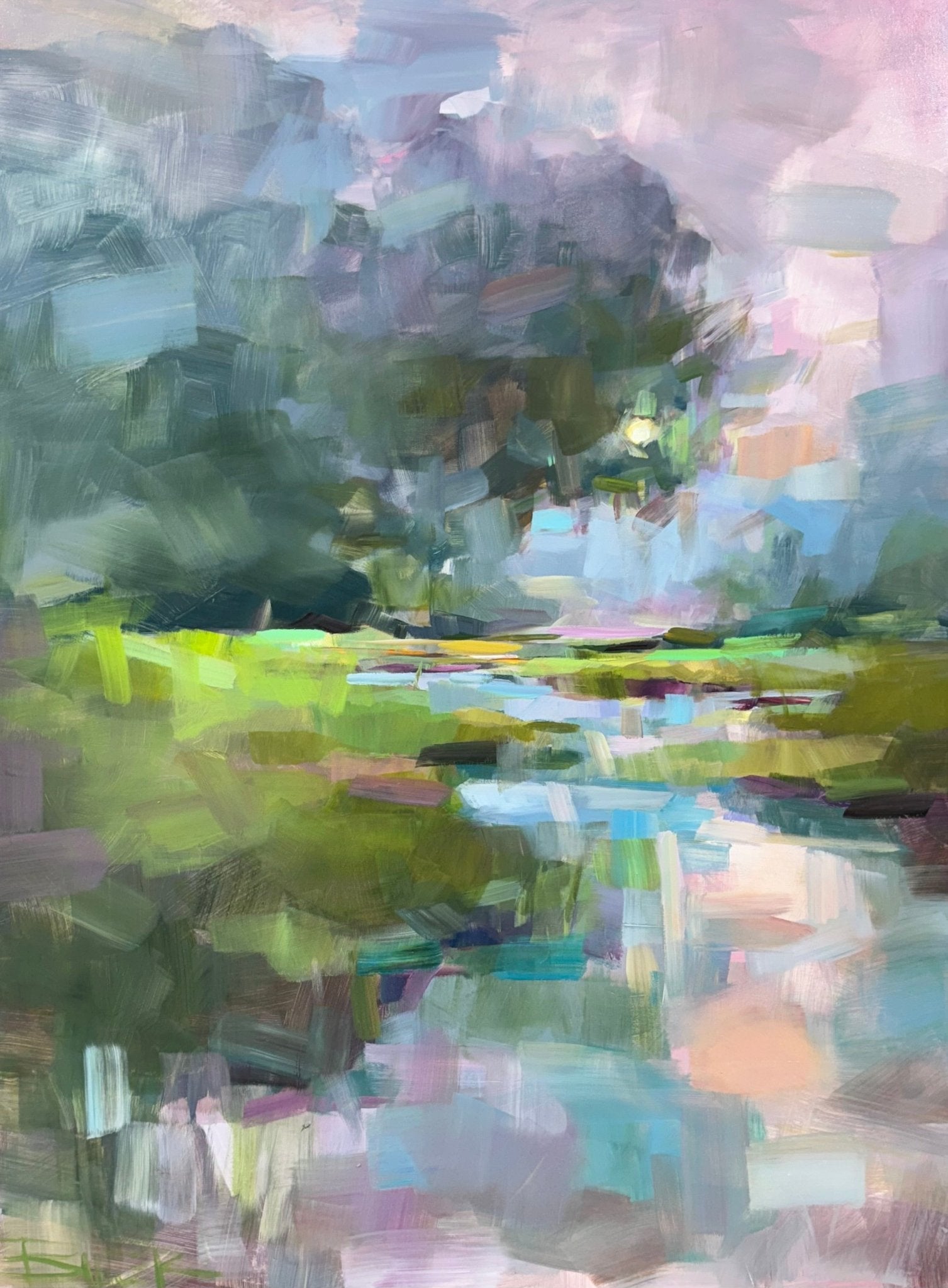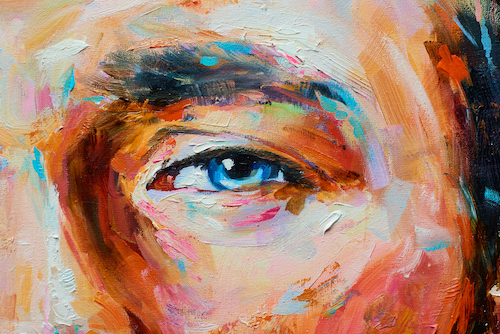Limited Edition Valuable Oil Paintings for Sale
Limited Edition Valuable Oil Paintings for Sale
Blog Article
Discovering All About Oil Paints: An Overview to Comprehending Their Beauty and Value
Oil paintings have astounded target markets for centuries, offering a peek into the artistic mastery of numerous periods. Their abundant history is linked with ingenious techniques and extensive emotional expression. Comprehending the materials and techniques behind these artworks can improve admiration. Furthermore, the marketplace for oil paintings offers possibilities for collection agencies and investors alike. As one discovers this remarkable world, the question develops: what makes an oil paint genuinely important?
The History of Oil Paint: A Journey With Time
Although oil paint has roots that date back to old times, it truly prospered during the Renaissance, when musicians discovered its adaptability and abundant shade capacity. Early examples can be traced to the 7th century, with strategies progressing especially throughout cultures. The tool came to be prominent in Northern Europe in the 15th century, especially through the works of musicians like Jan van Eyck, who spearheaded its usage for comprehensive realism and vivid colors. This period noted a separation from tempera paints, permitting for greater depth and texture. As oil paint spread, it influenced numerous artists, bring about work of arts by renowned numbers such as Leonardo da Vinci and Rembrandt. The medium's legacy proceeds, forming the art world well right into modern-day times.
Comprehending Oil Paints: Materials and Techniques
As artists check out the globe of oil paints, they run into a diverse selection of products and methods that specify this medium. The key components of oil paint include pigments, which offer shade, and drying out oils, such as linseed, that bind the pigments and assist in application. Different ingredients can customize the paint's appearance and drying time, boosting adaptability. Strategies like glazing, where clear layers are developed, and impasto, which includes using thick paint, enable for different aesthetic effects. Additionally, using brushes, combination knives, and even fingers can create distinct structures and finishes. Comprehending these materials and strategies enables musicians to totally express their creativity and accomplish the preferred impact in their artwork.
The Duty of Color in Oil Paints
Shade plays a pivotal duty in oil paints, influencing both aesthetic appeal and psychological resonance. Recognizing shade theory basics, consisting of the connections between colors, can boost a musician's capacity to convey mood and ambience. Furthermore, grasping color blending strategies enables greater deepness and richness in a painting's palette.

Shade Concept Basics
Understanding shade theory is necessary for artists working with oil paints, as it develops the structure for developing aesthetically engaging and harmonious structures. Shade theory incorporates the research study of how colors communicate, the color wheel, and the connections between primary, second, and tertiary colors. Artists utilize complementary shades to boost contrasts and create focal factors, while similar colors advertise unity and cohesiveness within a piece. Furthermore, the principles of cozy and cool shades affect the perception of deepness and space in a paint. Grasping these concepts enables musicians to adjust color successfully, directing the viewer's eye and interacting their designated message. Proficiency of color theory inevitably improves an artist's capacity to convey feelings and ideas through their work.
Emotional Effect of Color
The psychological impact of shade in oil paints plays a vital function in just how visitors perceive and connect with artwork. Colors evoke details sensations and state of minds, affecting the audience's psychological state. As an example, cozy colors like oranges and reds can create a feeling of warmth and energy, while amazing tones such as blues and greens usually stimulate calmness or introspection. Artists strategically select color schemes to boost narrative components, directing the target market's emotional journey. The saturation and contrast of shades better enhance these impacts, drawing attention and producing emphasis. Inevitably, the interaction of shades in oil paints not just enhances their visual allure but also acts as an effective tool for emotional expression, enhancing the visitor's experience and interpretation.
Shade Mixing Techniques
While several aspects of oil painting contribute to the total structure, understanding shade mixing techniques is necessary for accomplishing desired effects and deepness. Shade blending can be approached through different approaches, including the subtractive and additive processes. Additive mixing entails combining colors of light, while subtractive blending relies upon pigments, where shades mix to create new tones. Musicians frequently make use of a minimal scheme to create harmonious works, understanding the relationships in between main, additional, and tertiary colors. Techniques such as glazing and scumbling even more enhance depth and luminosity. By masterfully blending colors, a musician can evoke emotions, develop centerpieces, and achieve a feeling of realistic here look, inevitably raising the paint's aesthetic and emotional impact.
Famous Oil Painters and Their Iconic Works

Famous for their mastery of color and method, oil painters have actually developed some of one of the most renowned artworks in history. Popular musicians like Vincent van Gogh captivated audiences with his emotive brushwork in "Starry Evening," while Claude Monet's "Impression, Dawn" prepared for Impressionism. Leonardo da Vinci's "Mona Lisa" remains an enduring symbol of artistic wizard, showcasing his ability in capturing human expression. Rembrandt's "The Evening Watch" highlights his innovative use of light and darkness. Various other notable figures include Pablo Picasso, who transformed contemporary art with his vibrant testing in works like "Les Demoiselles d'Avignon," and Georgia O'Keeffe, whose vibrant representations of landscapes and flowers assisted specify American modernism. Each musician's unique style added significantly to the oil paint landscape.
Just how to Review the High Quality of an Oil Paint
Reviewing the quality of an oil paint involves a careful analysis of craftsmanship techniques, in addition to an evaluation of shade and composition. Observing brushwork, layering, and the application of paint can reveal the artist's skill level. Furthermore, the interplay of colors and the general setup of components contribute significantly to the paint's aesthetic worth.
Evaluating Workmanship Techniques
A thorough evaluation of craftsmanship methods is crucial for establishing the top quality of an oil paint. Critics need to initially check out the application of paint; thick, distinctive brushstrokes might recommend an experienced hand, while excessively consistent applications can indicate a lack of deepness. oil paintings for sale. The layering method is likewise vital; the existence of glazes and varied density can boost luminosity and complexity. Additionally, the quality of the materials made use of, such as the canvas and pigments, plays a significant duty in toughness and overall aesthetic. Interest to information in elements like sides and changes in between colors reflects the artist's commitment to their craft. Inevitably, these methods add to the painting's emotional influence and market value, acting as indications of the musician's skill and intent
Analyzing Shade and Structure
While assessing the high quality of an oil painting, one need to concentrate on the interplay of color and structure, as these aspects are fundamental to the art work's overall effect. Shade options can evoke emotions and establish mood; for that reason, the artist's palette should be taken a look at for consistency and contrast. A healthy make-up routes the viewer's eye and develops a sense of unity. Artists typically use methods like the guideline of thirds or leading lines to improve aesthetic rate of interest. Additionally, making use of light and shadow can include deepness, enhancing the three-dimensionality of the paint. Eventually, an effective oil paint marries color and structure, involving the customer and welcoming a much deeper appreciation of the musician's vision and strategy.
Taking care of and Preserving Oil Paintings
Appropriate care and preservation of oil paints is essential for preserving their honesty and longevity. To shield these artworks, it is important to show them away from straight sunshine, which can cause fading and staining. Keeping a secure environment with controlled temperature and humidity additional aids in preventing damage. Cleaning ought to be done delicately using a soft, dry fabric, staying clear of any type of severe chemicals that might harm the paint or varnish. Normal inspections for indications of wear and tear, such as breaking or flaking, are a good idea. When saving or carrying oil paints, proper extra padding and framing are essential to stay clear of physical damage. Ultimately, thorough treatment adds to the visual appeal and value of oil paintings with time.
The Market for Oil Paintings: Spending and collecting
Understanding the marketplace characteristics for oil paintings is essential for collectors and financiers alike. The value of these artworks is affected by numerous aspects, consisting of the artist's online reputation, historical relevance, and current patterns. Enthusiasts usually seek items that resonate directly while considering potential gratitude in worth. Galleries and auctions work as main places for trading, with rates changing based on demand and rarity. Spending in oil paints needs research right into the marketplace, as well as an understanding of credibility and provenance. In addition, emerging artists might provide possibilities for considerable returns, while established names can command high prices. Overall, a strategic technique to collecting can generate both aesthetic satisfaction and economic rewards.

Often Asked Concerns
What Are the Environmental Effects of Oil Paint Products?
The ecological influences of oil paint products include the launch of volatile organic substances (VOCs), damaging waste generation, and resource removal for pigments. These variables contribute to air pollution and ecological destruction, increasing concerns amongst environmentally aware artists and customers.
Just How Do Various Canvases Influence Oil Painting Outcomes?
Different canvases influence oil paint results significantly. Absorbency, texture, and surface area high quality can modify paint application, drying out times, and color vibrancy. Musicians commonly select details canvases to achieve preferred effects and boost their artistic expression.
Can Oil Paintings Be Restored if Damaged?
If damaged, Oil paintings can certainly be brought back. Specialist conservators utilize various methods to repair tears, clean surfaces, and address discoloration, guaranteeing that the artwork keeps its initial elegance and worth for future generations.
What Are the Signs of an Initial Oil Painting?
The indications of an original oil paint consist of noticeable brush strokes, appearance variants, and an unequal canvas weave (oil paintings for sale). Additionally, credibility might be validated through provenance, signatures, and the existence of a varnish layer distinct to oil mediums
How Has Innovation Influenced Modern Oil Painting Techniques?
Innovation has substantially influenced modern oil paint methods by introducing digital tools for preparation, improved materials for structure and long life, and online platforms for selling and sharing art, thereby broadening musicians' creative possibilities and audience get to. Oil painting has origins that date back to old times, it absolutely flourished throughout the Renaissance, when musicians found its convenience and rich color potential. The psychological influence of color in oil paintings plays an essential role in just how visitors regard and connect with artwork. While lots of facets of oil paint contribute to the general make-up, grasping shade mixing methods is essential for achieving wanted impacts and deepness. Evaluating the high quality of an oil painting involves a cautious evaluation of craftsmanship methods, as well as an analysis of color and make-up. While reviewing the top quality of an oil paint, one should concentrate on the interaction of color and make-up, as these aspects are fundamental to the art work's overall influence.
Report this page